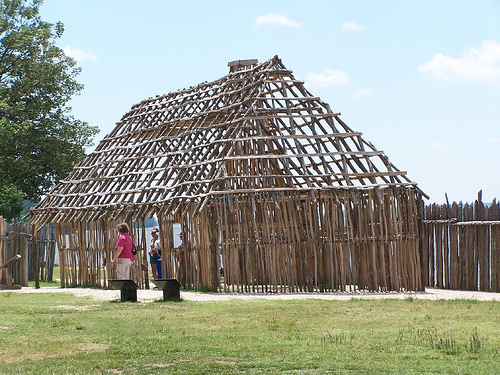Jamestown settlers had to resort to dire methods to survive
Ten years before the Thanksgiving feast to celebrate the bounty at Plymouth, the Jamestown settlers were trying to eke out a living on a malarial, brackish island with little arable land. Despite the many setbacks faced by the Jamestown colony, our country's founding settlers struggled on despite their travails. After all, they had little choice.
Many settlers died in those early years. And new evidence has come to light that those few who survived did so by cannibalizing the remains of those who died.
The worst year at Jamestown was the 1609-1610 winter, known as the "starving time." Out of 500 colonists, only 61 survived the winter. The settlers had arrived too late in the year to plant crops, were not accustomed to the hard labor required to build a settlement from scratch, and had very few supplies.
Initially, the local Native Americans greeted the Jamestown settlers with feasts and gifts of food. But as the settlers grew more desperate, they became more belligerent and arrogant toward the Native Americans, aggressively demanding food and supplies from their neighbors.
There have been rumors and written accounts of cannibalism at Jamestown, but little physical corroboration until last week. A group of archaeologists working on a trash pit at the original Jamestown location unearthed the skeletal remains of a 14-year-old girl. Analysis showed clear evidence that her flesh and brains had been removed from her bones, butcher style.
According to the man who was president at Jamestown during the starving time, the villages resorted to digging up corpses in order to eat them. Most likely, this girl had died (of unknown causes) and been buried, then disinterred for the dinner pot.
The girl had most likely been the daughter of a gentleman, and probably arrived at the colony in August of 1609 aboard a supply ship. She would only have lived in Jamestown for a few months before dying and being cannibalized.
As for how her remains came to be discarded in a trash pile, blame the colony's saviors. When relief ships finally arrived in the spring, they were greeted by 60 near-skeletal remaining colonists. The captain of the relief fleet, Lord De La Warr (for whom the state of Delaware is named) had all of the grisly remains - not just human, but the scattered bones of their cats, dogs, and horses the colonists killed for food - swept aside and dumped into the same refuse pile.
